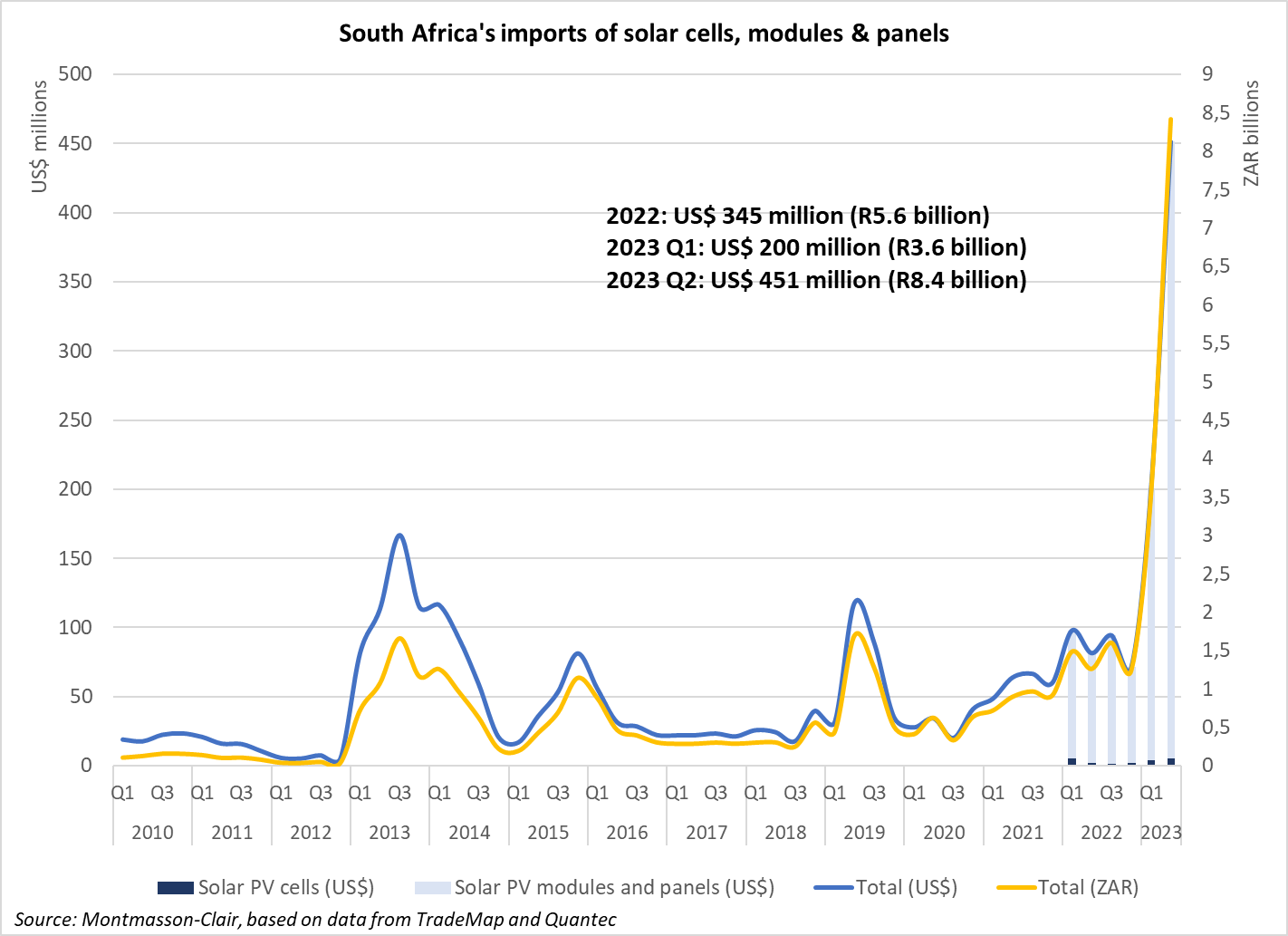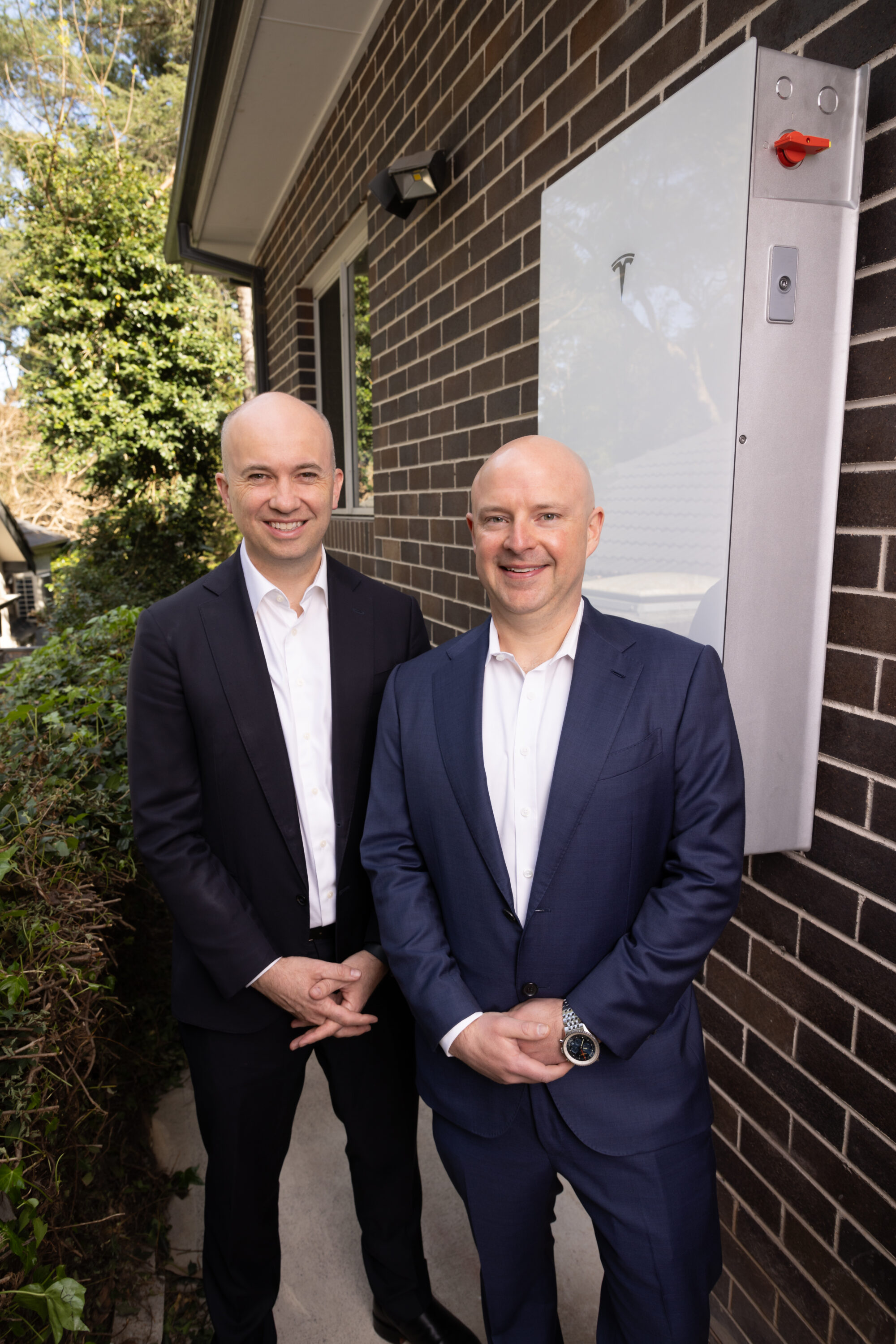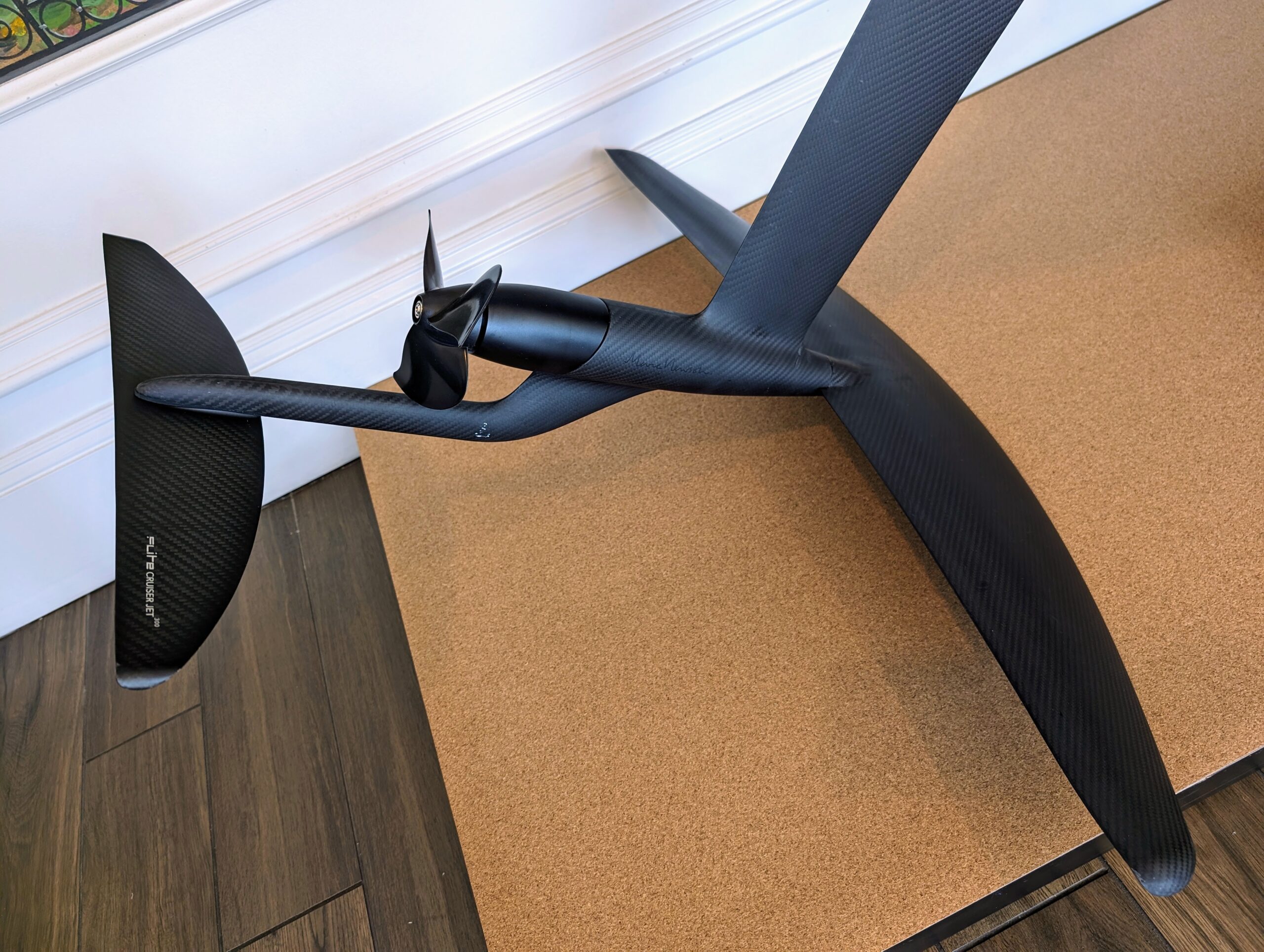
It is really good to see that some people have started tracking some data and deducing what has been going on in South Africa’s solar PV and now also lithium-ion battery storage scene. Recently, we reported that some analysis by Johannesburg-based Gaylor Montmasson-Clair, a Senior Economist at Trade, Industrial Policy Strategies (TIPS), showed that $650 million (R12 billion) worth of solar panels were imported into South Africa in the first 6 months of 2023. Gaylor adds that this is 2.2 GW worth of solar panels.
Now, a new update from Gaylor shows that in the same timeframe, South Africa imported $1.1 billion of lithium-ion cells and batteries. $1.1 billion worth in just the first 6 months of 2023! If we use current pricing estimates for volume orders of $250/kWh for stationary storage, it would mean South Africa imported about 4.4 GWh of lithium-ion cells and batteries in the first 6 months of the year. Gaylor adds that this a big jump from the $0.7 billion worth of cells and batteries imported in he whole of 2022 and a whopping 5× on the $0.2 billion imported in 2021.
A lot of South Africa’s coal power plants are quite old now. Therefore, plant breakdowns are quite common, and Eskom, the country’s national power utility, also has quite a large part of its fleet on planned maintenance and other activities to improve performance of some of these aging plants. This has resulted in South Africans experiencing their worst ever period of electricity rationing, called loadshedding. Eskom’s loadshedding programme is structured in “Stages,” where Eskom sheds a certain quantum of load from the grid to stabilize the grid — not all at once. Depending on the severity of the crisis, loadshedding is implemented in stages, from Stage 1 to Stage 8, where Stage 1 sheds 1000 MW of load from the grid and in a Stage 8 scenario, Eskom takes out 8000 MW of load from the grid. Loadshedding is implemented over 2-hour or 4-hour blocks on a rotational basis depending on the severity of the crises. Stage 8, however means most consumers will experience a blackout for about 12 hours. This year alone, South Africans have experienced more loadshedding than the previous 5 years combined! So, South Africa needs new generation capacity ASAP.
It is good to see the growth in both distributed and utility-scale solar PV in South Africa, which is quickly adding some significant capacity into the country’s energy mix. However, due to the frequent power outages, installations of battery storage for both residential and commercial & industrial applications is booming as South Africans move to back up their homes and businesses during power outages. Batteries add critical grid flexibility.
So, South Africa spent $650 million on importing solar cells and panels in the first 6 months of the year and then another $1.1 billion on importing lithium-ion cells and batteries. That’s $1.75 billion on these in just 6 months! This has brought up some big discussions on how to grow the localization of this ecosystem. South Africa has a few companies that import solar cells and then assemble solar panels. The same happens for stationary battery storage. Several companies import lithium-ion cells and assemble battery packs for the local and the export markets.
Featured image from Gaylor Montmasson-Clair
I don’t like paywalls. You don’t like paywalls. Who likes paywalls? Here at CleanTechnica, we implemented a limited paywall for a while, but it always felt wrong — and it was always tough to decide what we should put behind there. In theory, your most exclusive and best content goes behind a paywall. But then fewer people read it! We just don’t like paywalls, and so we’ve decided to ditch ours. Unfortunately, the media business is still a tough, cut-throat business with tiny margins. It’s a never-ending Olympic challenge to stay above water or even perhaps — gasp — grow. So …





